I enjoy spending time admiring artwork in Italy, ranging from ancient frescoes and sculptures to Renaissance masterpieces. One of my favorites is located in the Tuscan city of Siena. In the main piazza, known as the Campo, stands the historic Palazzo Pubblico, which used to be the town hall. Inside, you’ll find the Sala della Pace (Hall of Peace), also referred to as the Sala dei Nove (Hall of Nine or Council Room). The walls are adorned with several captivating fresco scenes by the renowned artist Ambrogio Lorenzetti, including the *Allegory of Good Government*, *Allegory of Bad Government*, *Effects of Bad Government in the City*, *Effects of Good Government in the City*, and *Effects of Good Government in the Country*. I find these frescoes to be both accurate and timeless in their portrayal of daily life under wise and virtuous leadership versus a self-serving, corrupt, and tyrannical government.
During the 14th century, Italy was fragmented into city-states, each functioning like independent countries with their own governance. Siena was a proud republic and one of the most influential cities, having gained wealth from banking and trade. Its strategic position also allowed it to profit from the flow of pilgrims traveling between France and Rome. However, this was a tumultuous political era in Italy, with governments frequently being toppled and replaced.
Siena was governed by two dominant authorities: the church, represented by the grand duomo atop the hill, and the Palazzo Pubblico, the city hall. The council room within served as the meeting place for The Nine, a rotating assembly of citizens who acted as the city council for two-month terms.
In contrast to much of the artwork from this period, which was primarily religious, these frescoes were civic in nature and commissioned by local governing bodies. They served as poignant reminders for city leaders of their obligation to make just and ethical decisions, as well as the dire consequences of neglecting this duty.
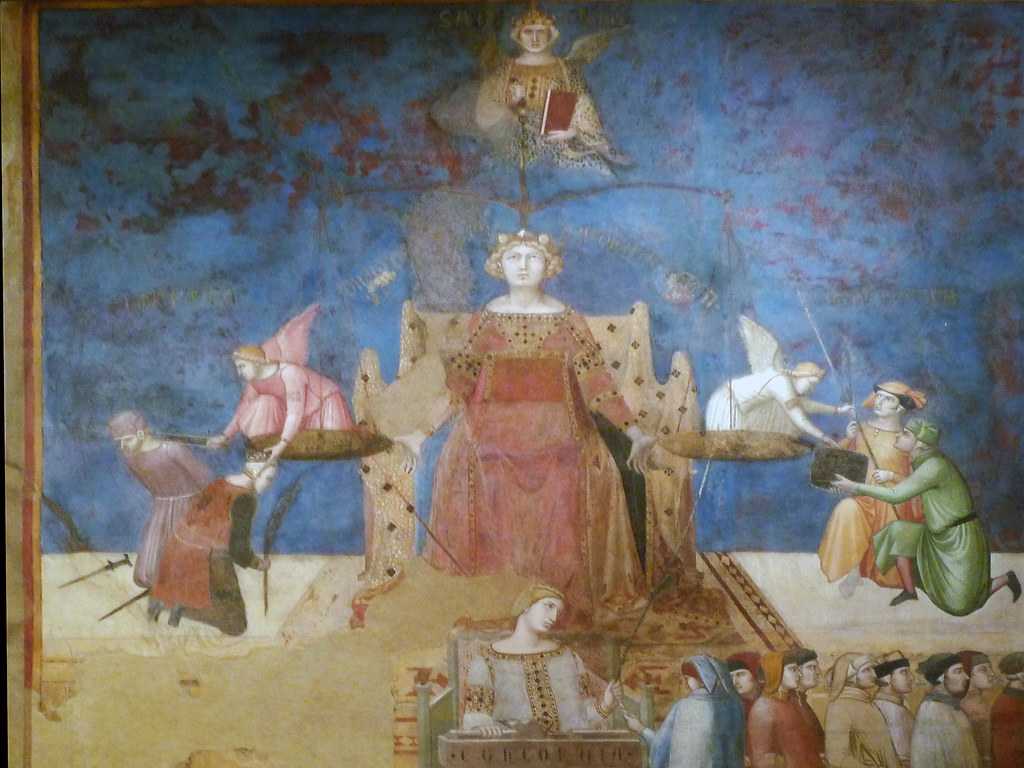
The first fresco, *The Allegory of Good Government*, features a door through which the Nine entered, situated beneath the figure of Justice. In the fresco, Justice looks up at the figure of Wisdom while holding a large set of scales balanced on either side by angels—one administering a reward and the other a punishment. Cords extend from the two angels towards a figure named Concordia, who holds a plane in her lap to symbolize equality among citizens representing various societal ranks. These cords unite everyone, anchored by Justice.
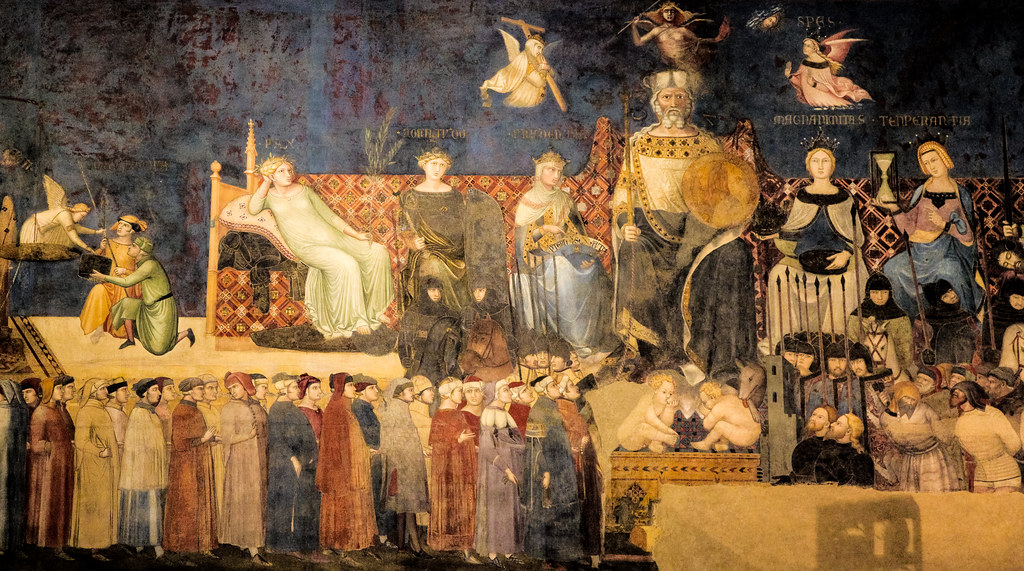
These cords lead up to the prominent figure of *Good Comune*, surrounded by various virtues. To the left is Peace, depicted in a reclining posture, her old, tarnished armor resting beneath her pillow, suggesting that when all the surrounding virtues are upheld by the rulers and the populace of Siena, peace prevails.
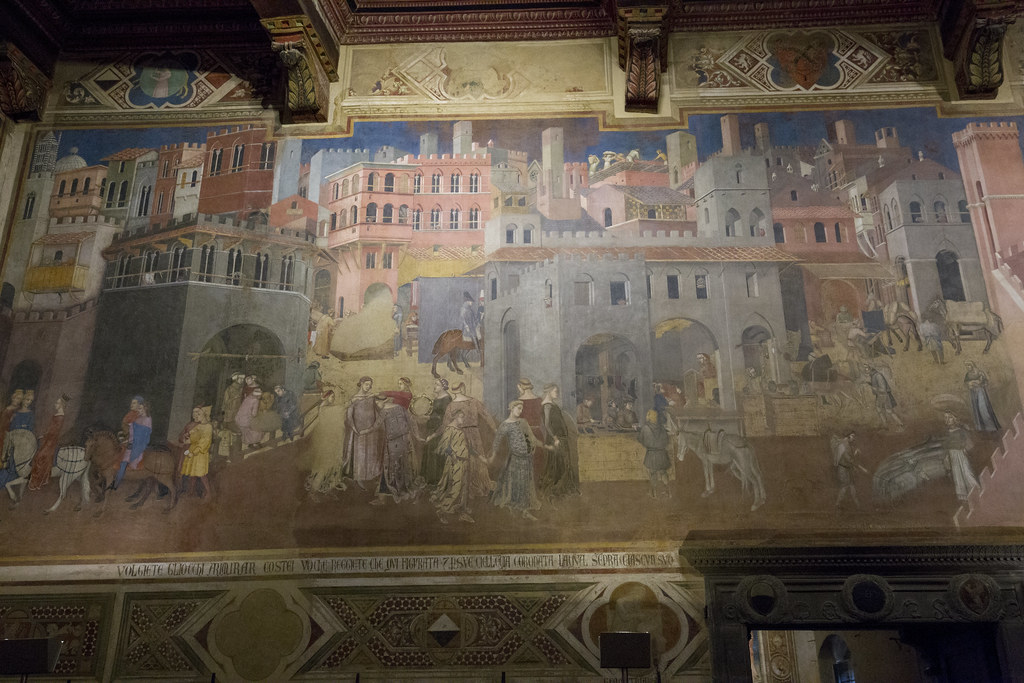
The fresco titled *The Effects of Good Government in the City and the Country* presents a secular scene of flourishing commerce. It showcases abundance and prosperity, with justice, art, and culture at the forefront.
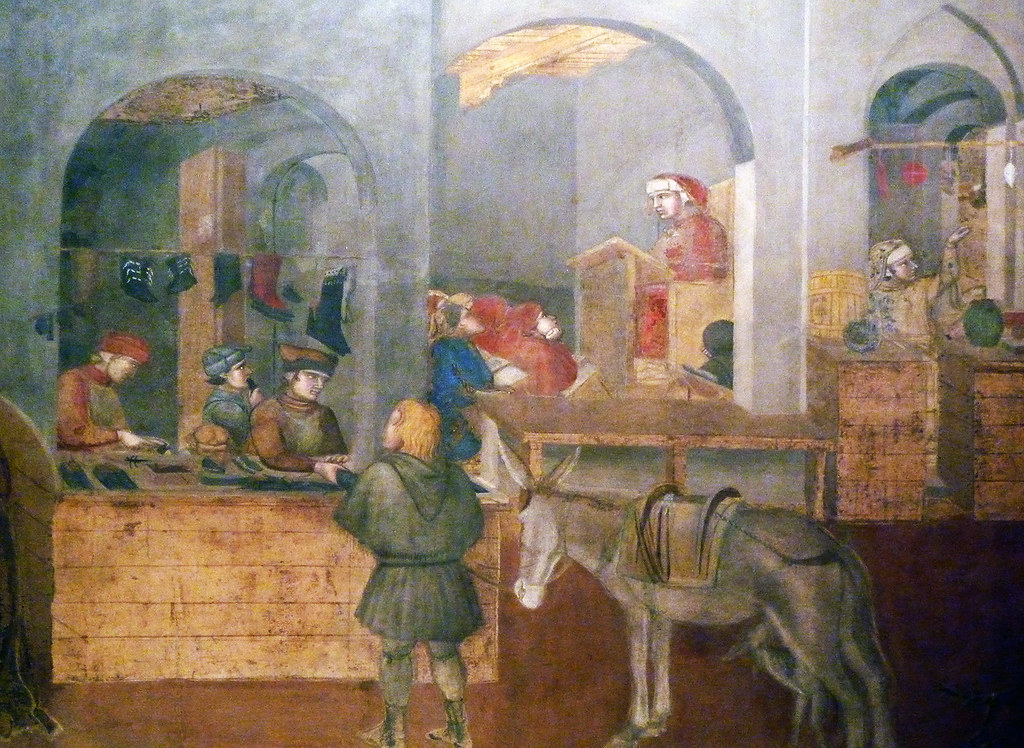
This fresco depicts a utopian city, a vision of paradise on earth achieved through thoughtful governance where people flourish. The streets are alive with well-off citizens engaging in trade, the architecture is being expanded by diligent workers, and shops buzz with activity. There’s joy in the air, with a strong sense of peace and order prevailing.
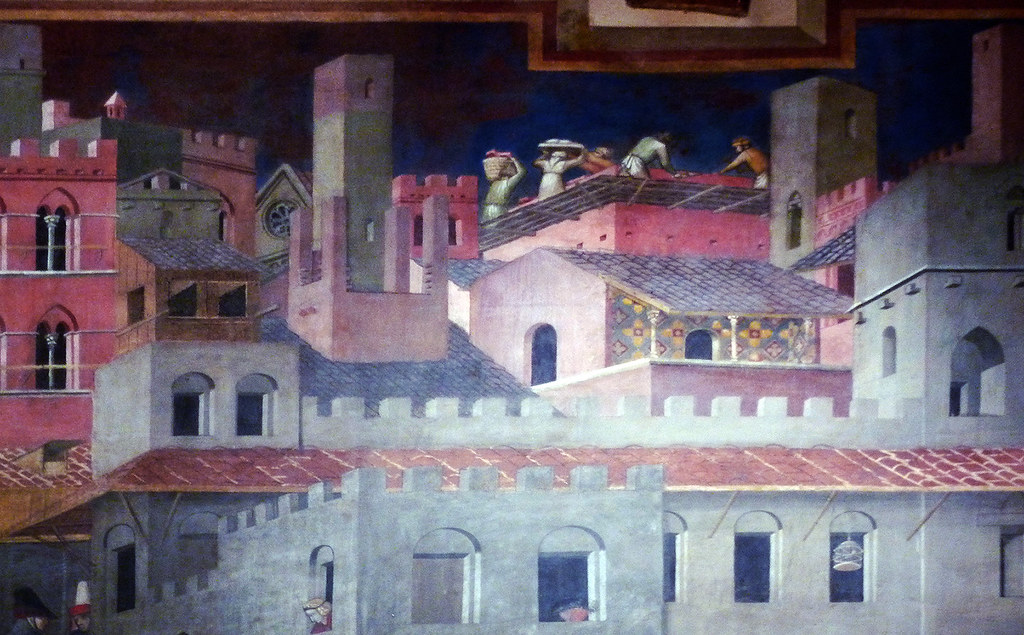
The ruling members known as The Nine had this inspiring scene before them as they made decisions for the city. It constantly reminded them that wise choices could lead to such a thriving community.
*The Effects of Good Government in the Countryside* showcases wealthy landowners enjoying a hunt on horseback, while a peasant leads his pig to market. The landscape is alive with planting and harvesting, signaling health and productivity.
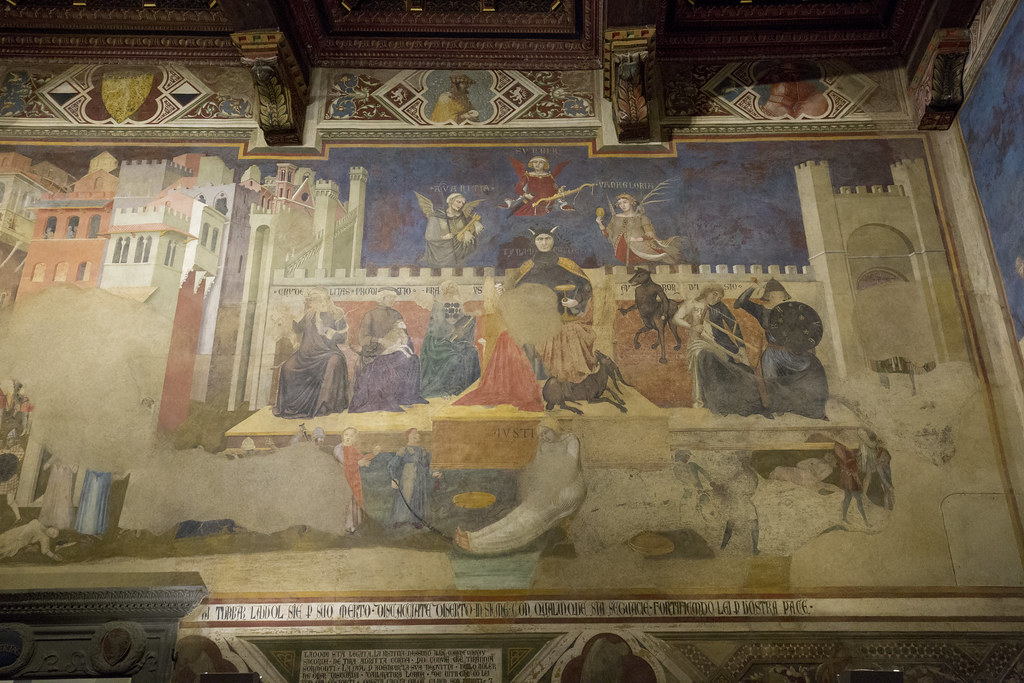
On the left wall hangs *The Effects of Bad Government*, a stark contrast to the previous frescoes. A devilish figure representing tyranny is flanked by vices like Avarice and Vainglory. Below him, Justice is depicted as bound, no longer able to govern the city. Criminal acts are portrayed against a backdrop of war-torn architecture, with visible damage such as broken windows and crumbling walls. Fear holds sway over the citizens, evident in the chaos below.
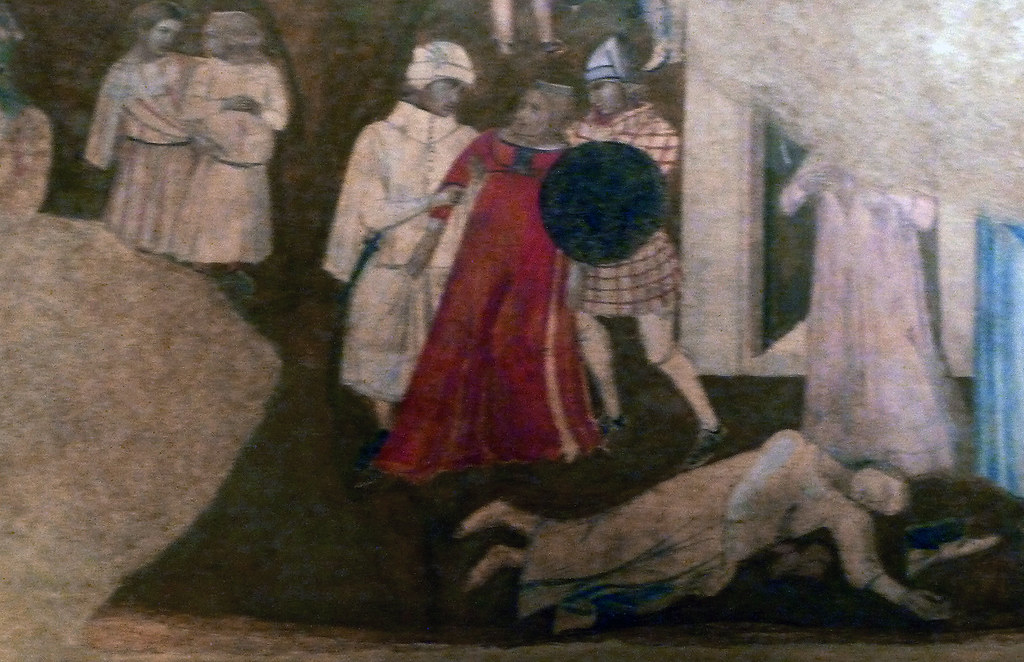
A woman is seen being led away by two men, while another lies wounded with no assistance. The countryside is marred by scorched fields and burning homes, painting a picture of despair and neglect. A figure named Terror rides over this desolate landscape unchecked.
Standing before these frescoes, rich with symbolism and created centuries ago amidst the backdrop of Italy’s historic rivalries and wars, I felt the weight of their message. The lessons of the past resonate profoundly even today: effective governance brings the rewards of a healthy and engaged population. I’m certain that The Nine understood the immense responsibility they bore in ensuring the people of Siena would never have to endure anything less.
Resources:
Ambrogio Lorenzetti, Palazzo Pubblico frescoes; *Allegory and Effect of Good and Bad Government*



